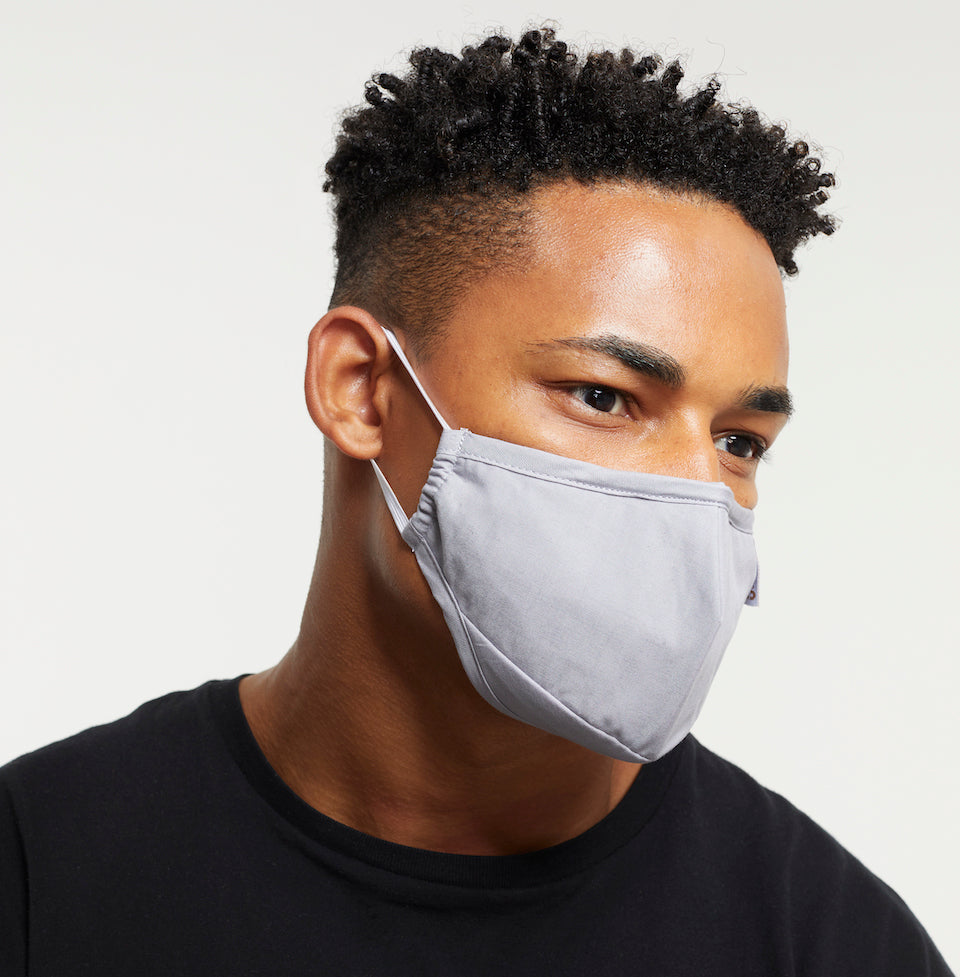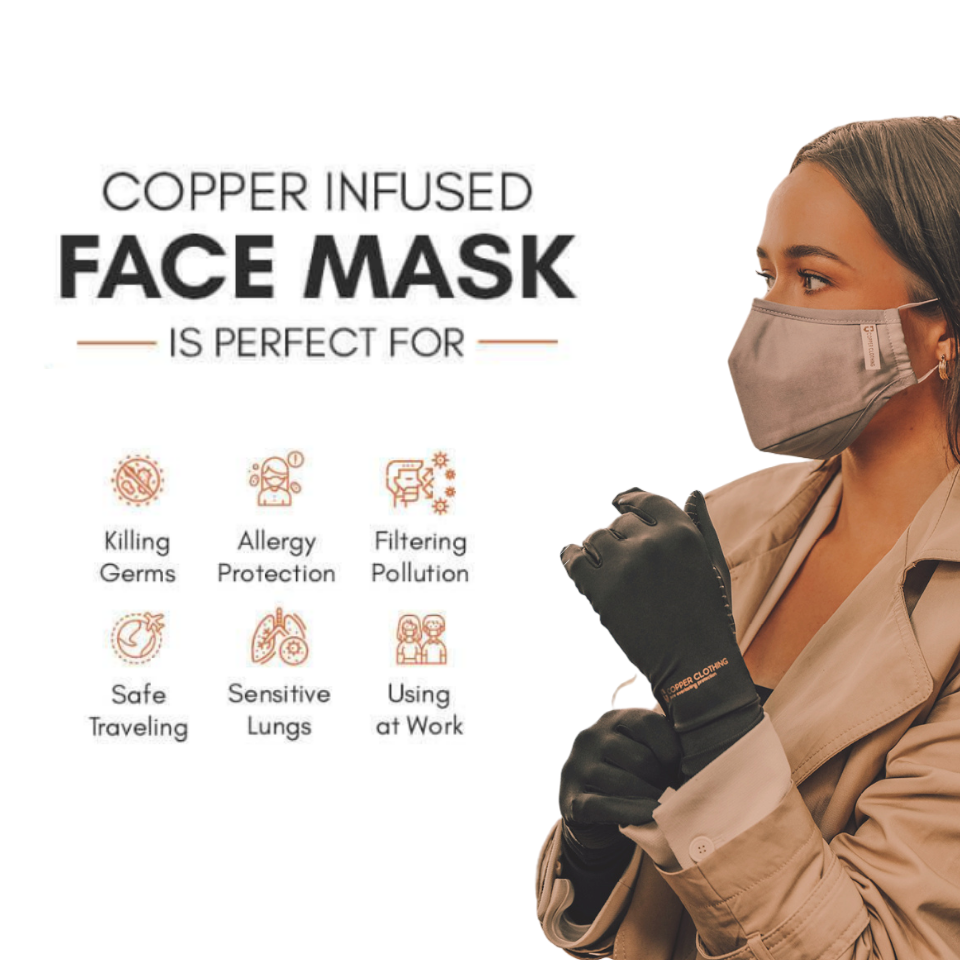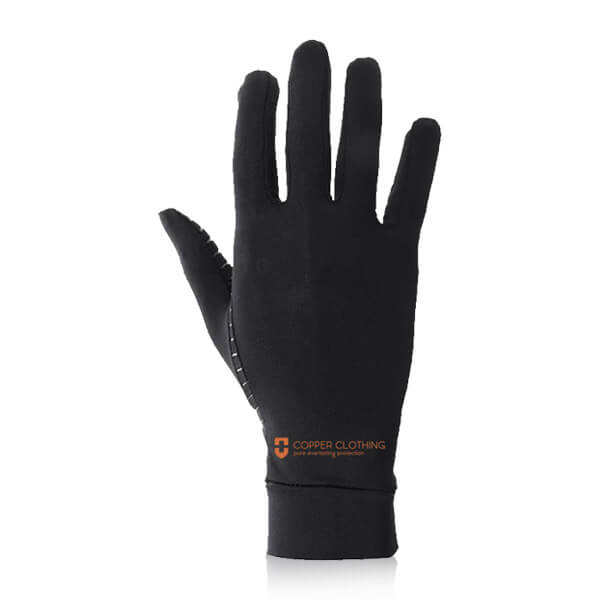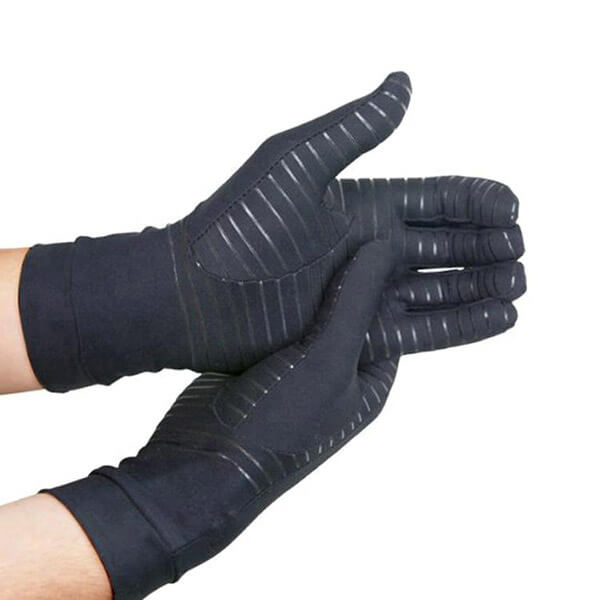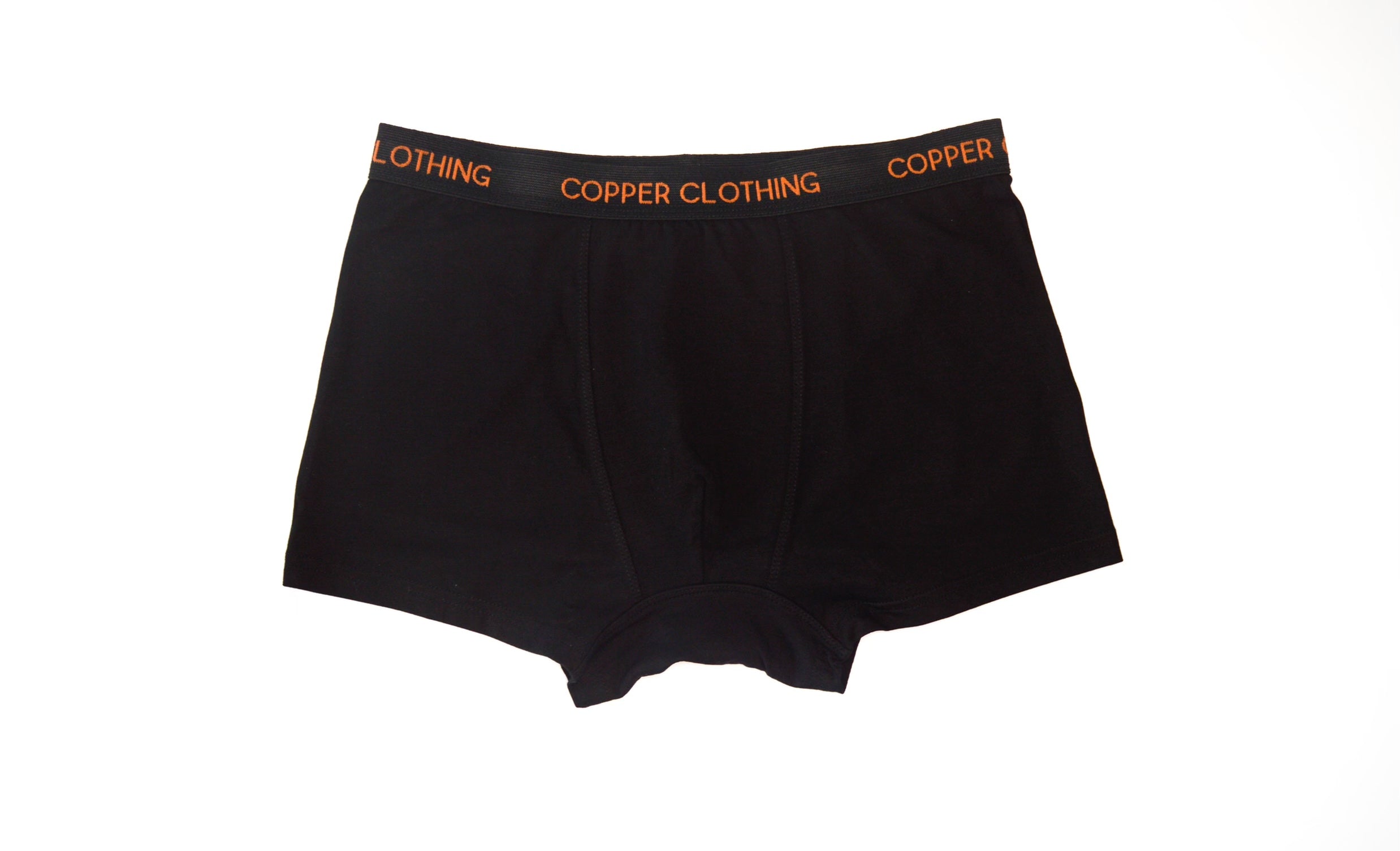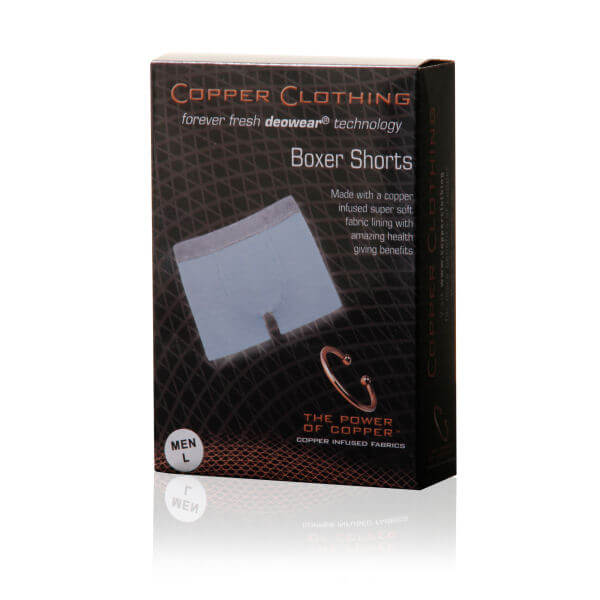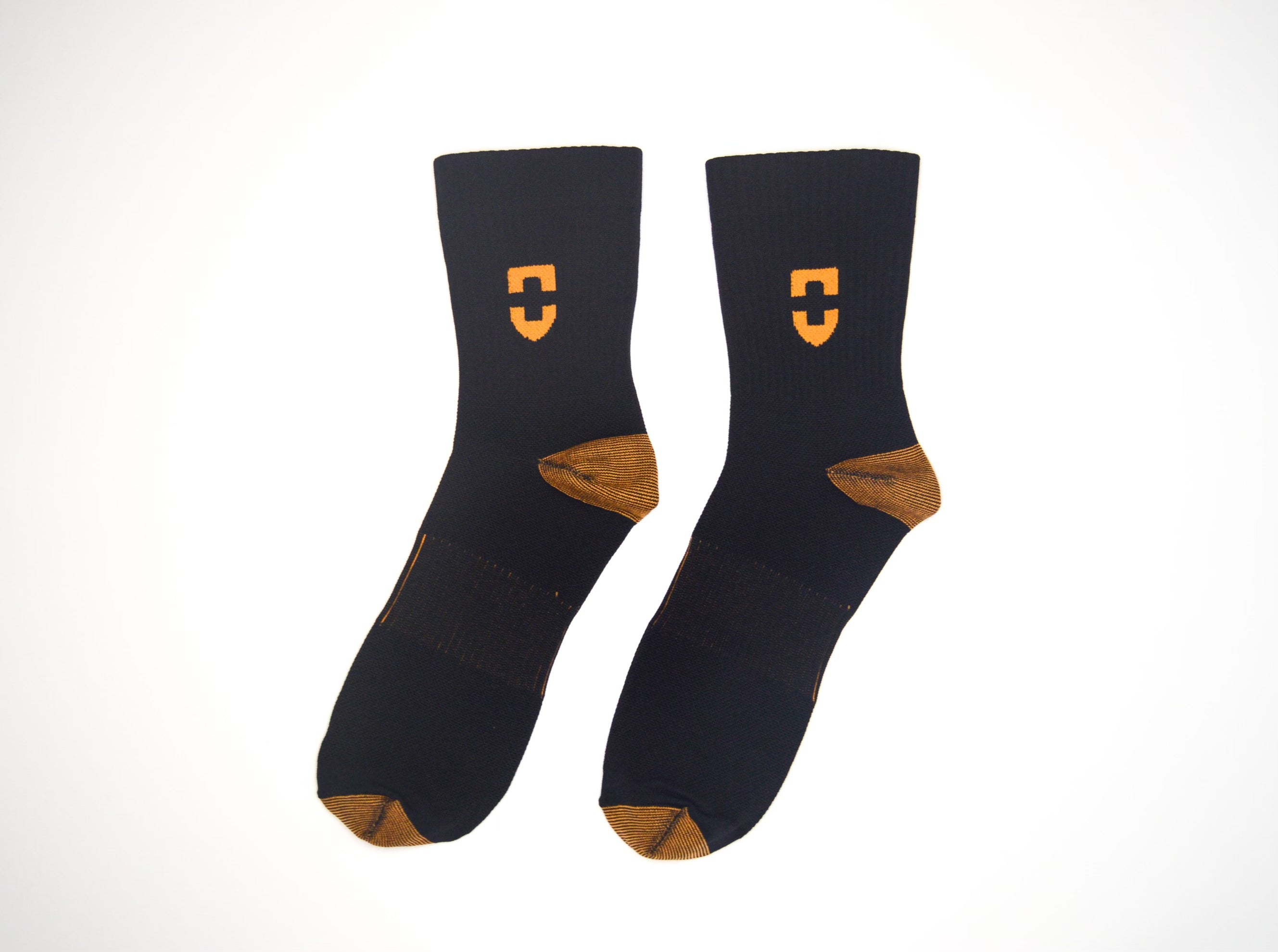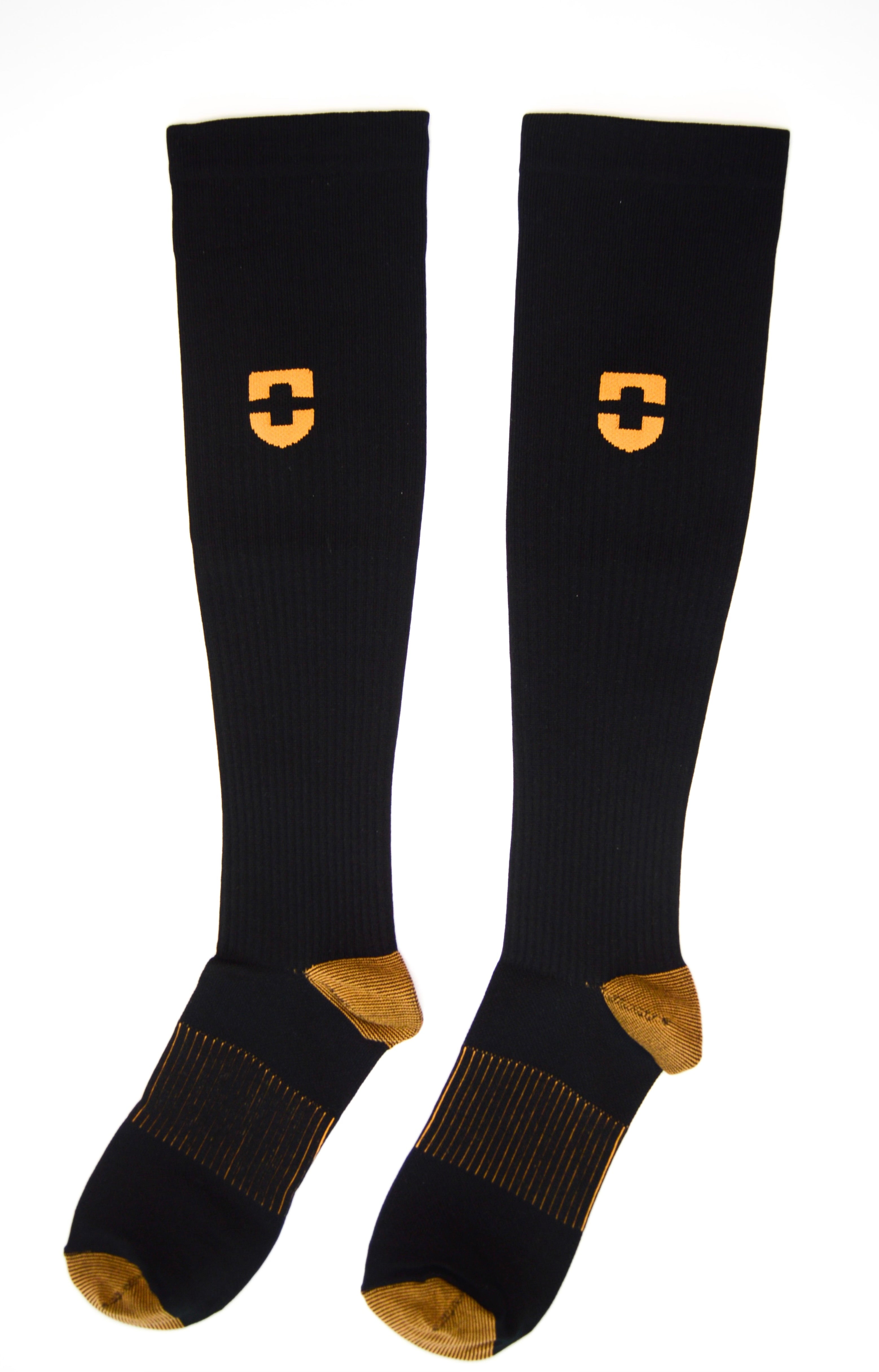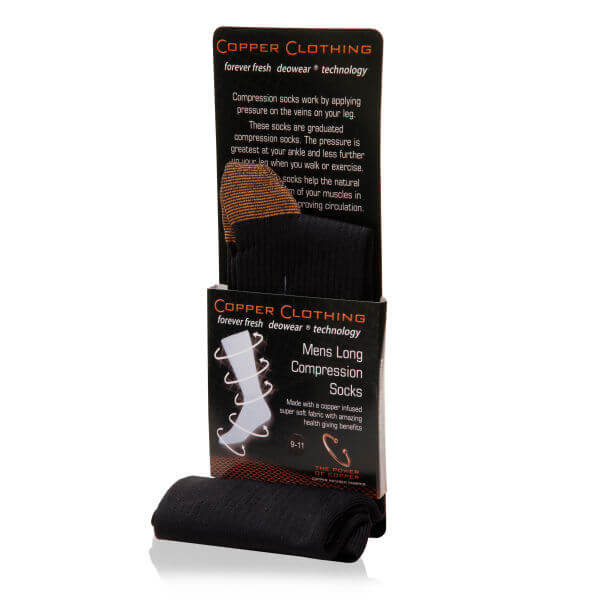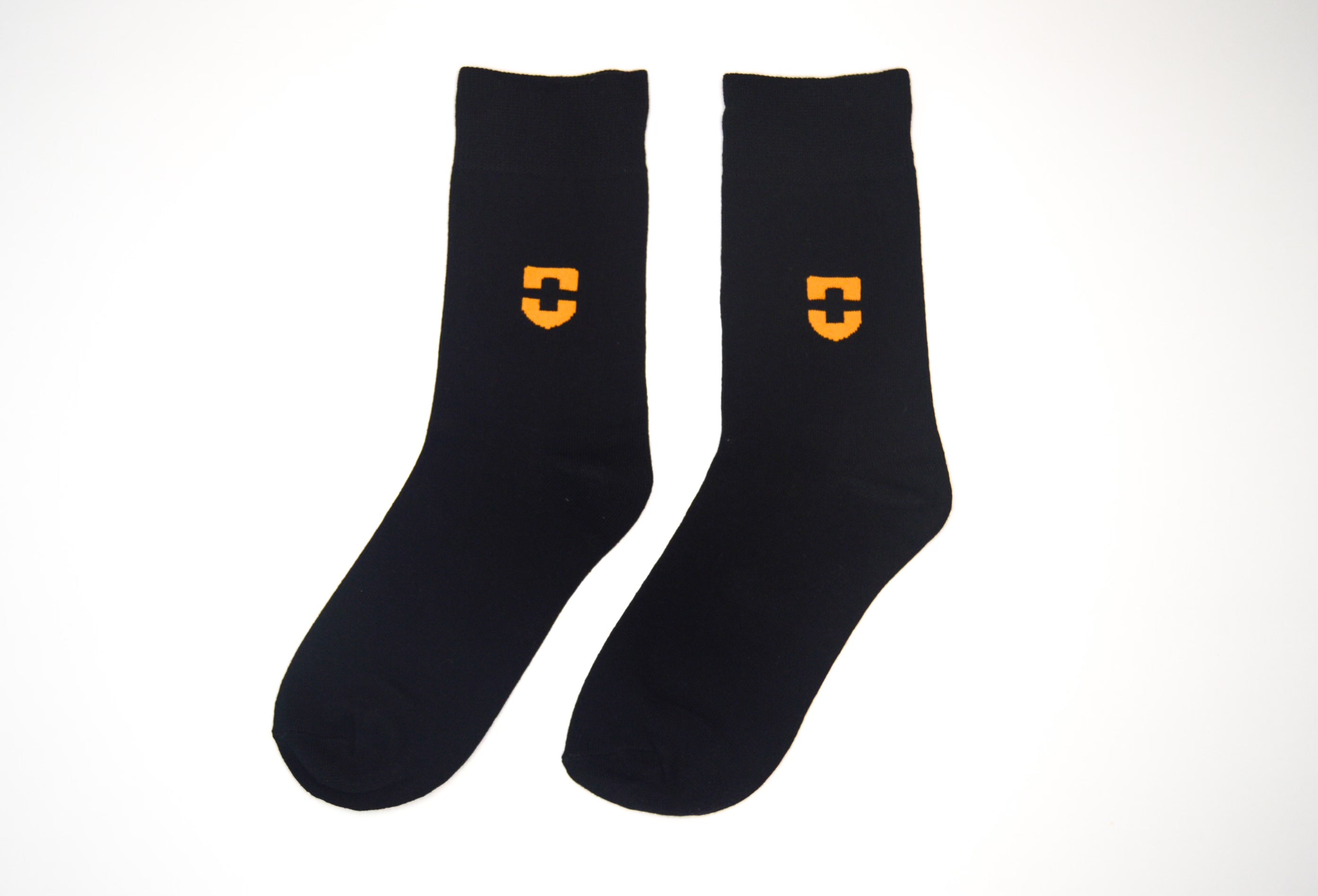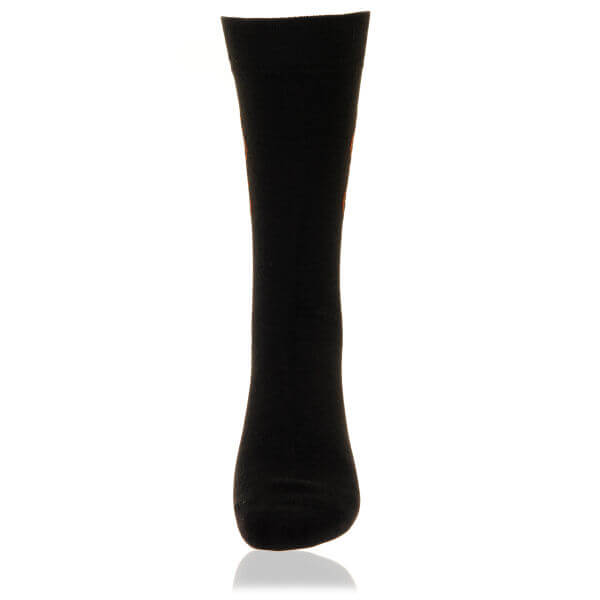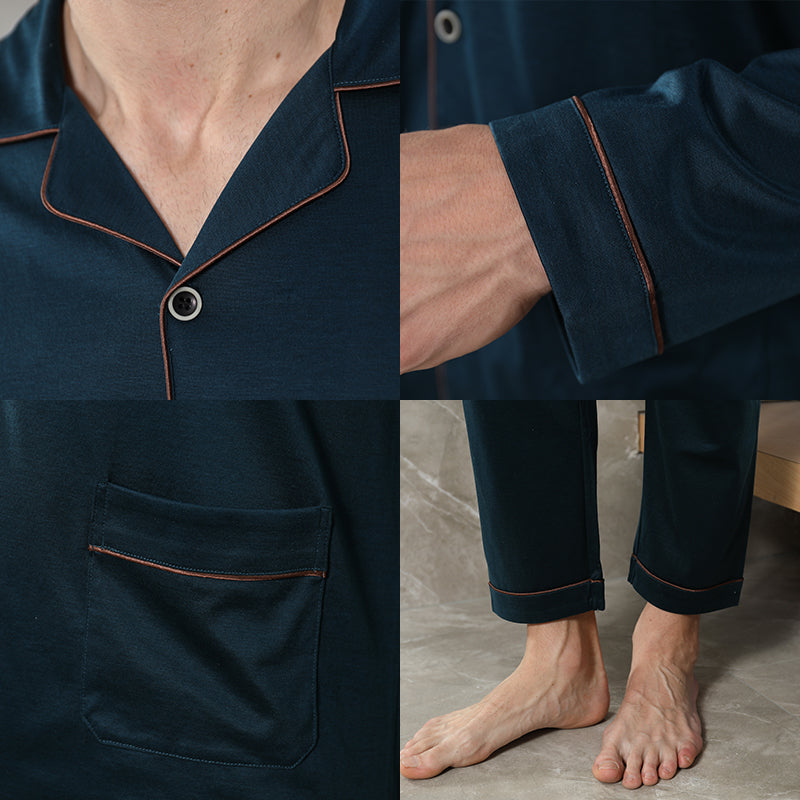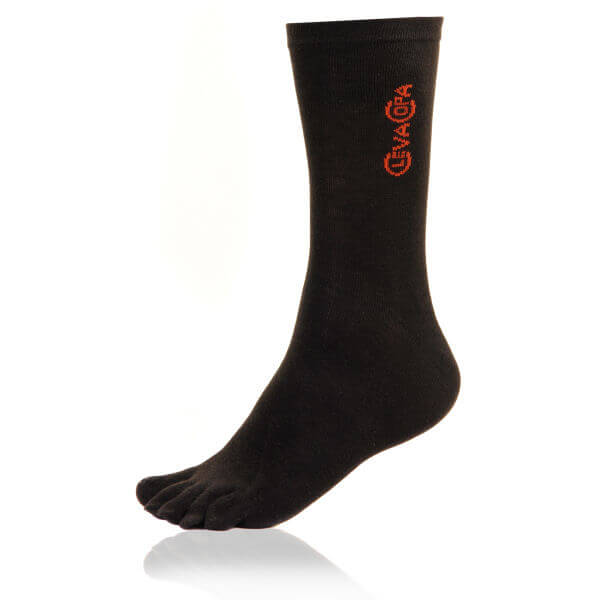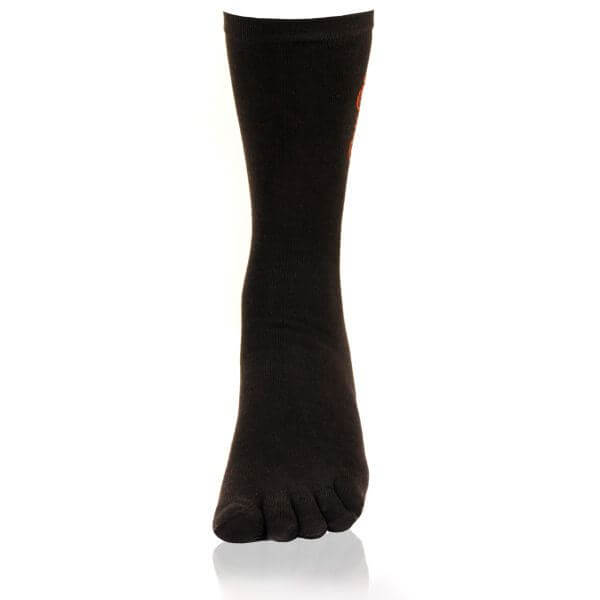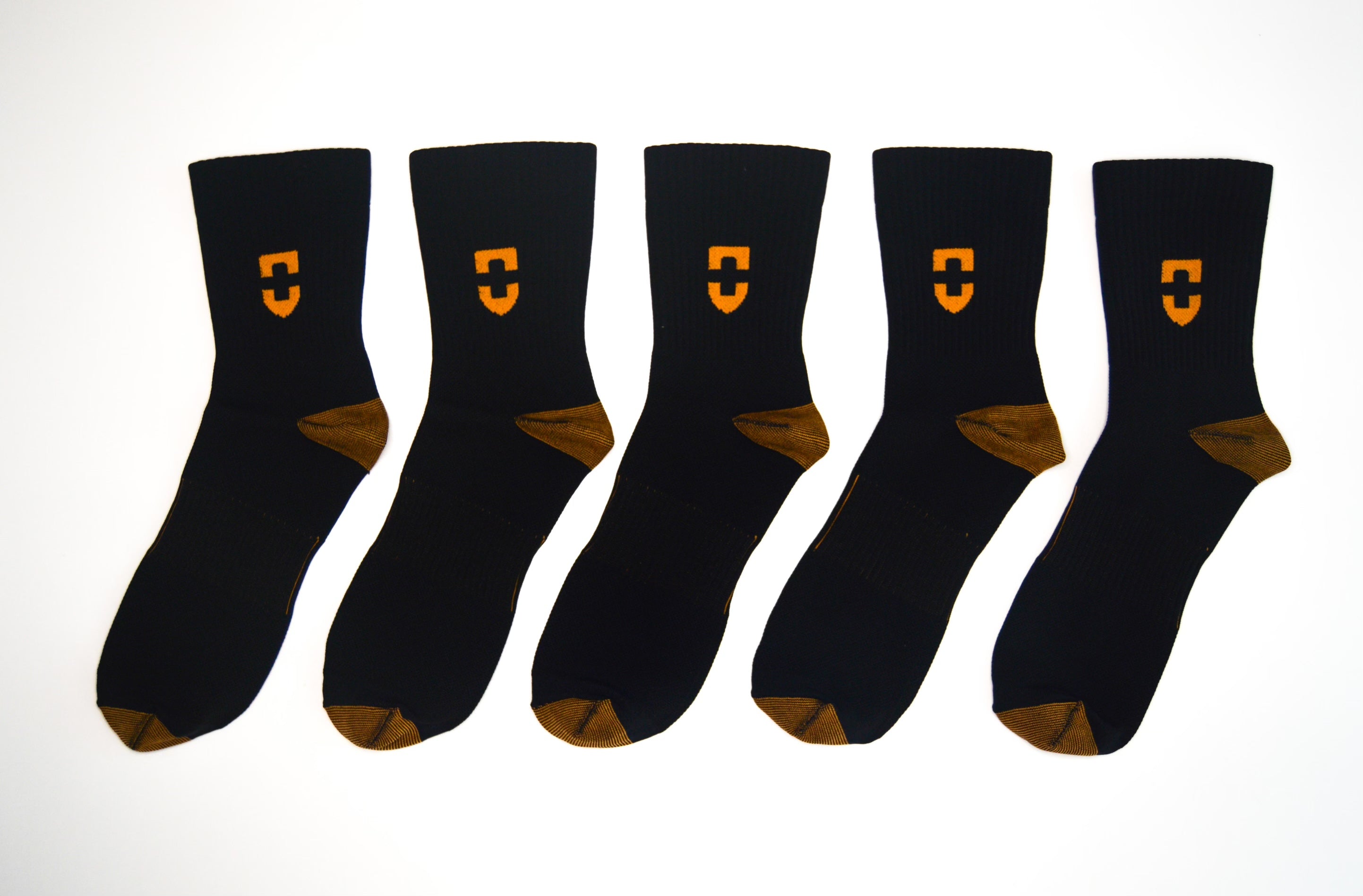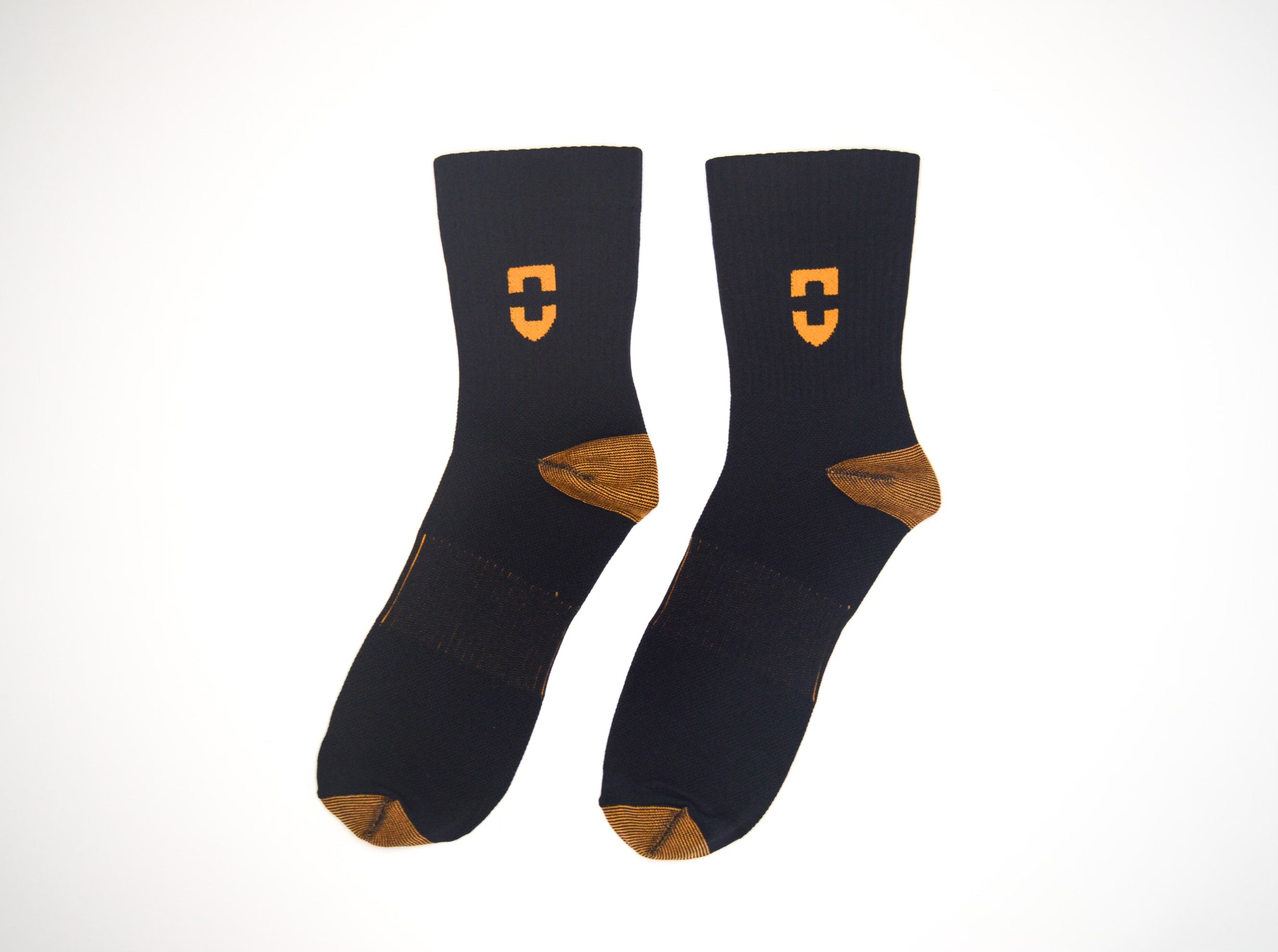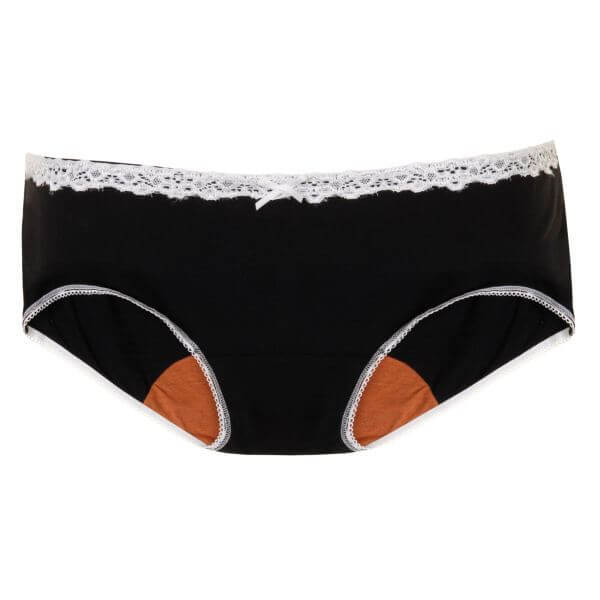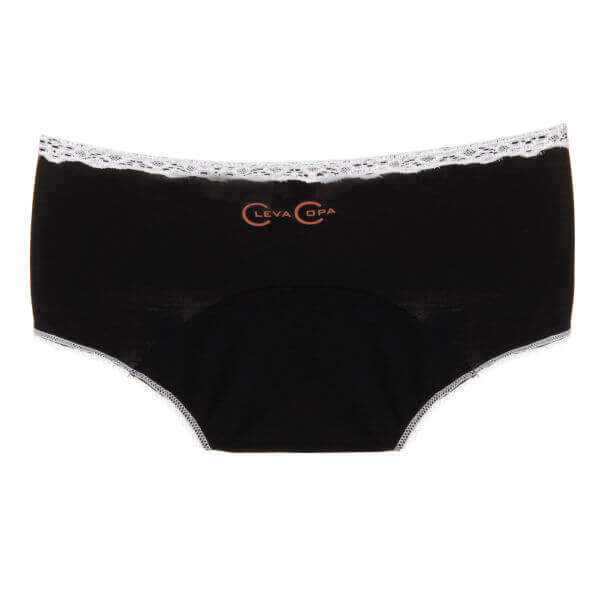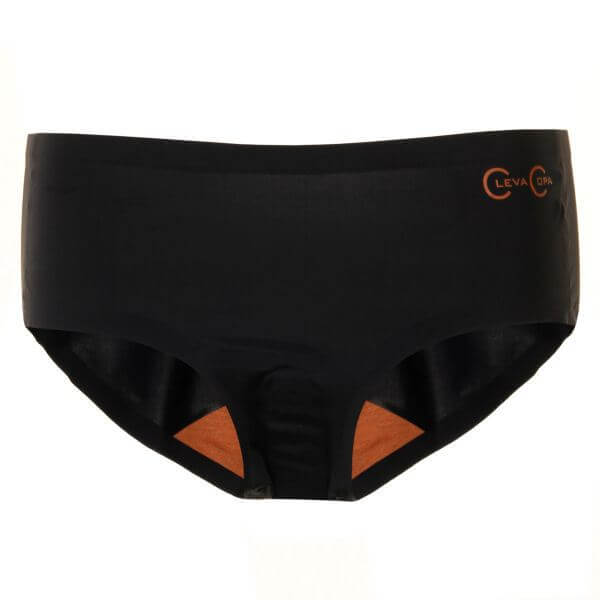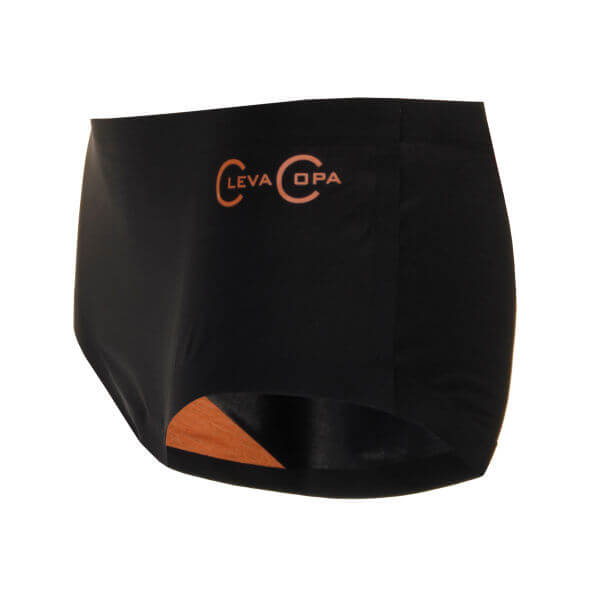All You Need to Know About Deep Vein Thrombosis(DVT)
Published
March 26 2019
Stay up to date on Copper Product releases & deals.
Subscribe to Our Monthly Newsletter for Deals on Product Delivered to Your Inbox!
DVT or Deep Vein Thrombosis is a medical condition that can cause serious health issues and even death. Let’s look at DVT causes, symptoms and risks, and how copper compression socks can help with DVT prevention and treatment.
What is Deep Vein Thrombosis?
Also known as thromboembolism, post-thrombotic syndrome, post-phlebitic syndrome and venous thrombosis, DVT is a condition where you develop a blood clot in leg, foot or other veins deep in the body. It can affect any veins in your body, but is generally found in the lower leg, foot, thigh or pelvic region.
What Causes Deep Vein Thrombosis?
DVT usually occurs when blood flow through your veins is slower than normal, causing blood cells to clump together and form a clot. This can happen for various reasons, but certain factors have been linked to a higher risk of DVT in legs, feet and other body parts. These include:
- Obesity – Being overweight can also raise the risk of DVT, and people with a BMI or Body Mass Index of 30 and above are more likely to develop the condition.
- Inactivity – Long periods of sitting and lying down can slow down blood circulation, which may keep anti-clotting agents from mixing properly in your blood.
- Pregnancy – With higher pressure on the lower body during pregnancy, you face the risk of developing a blood clot in foot, leg or pelvic veins up to 6 weeks after delivery.
- Surgery – Certain kinds of surgeries or medical treatment can also be a DVT risk, especially if you’re on bed rest, wearing a leg cast or have limited physical activity for some time.
- Smoking – Smokers face a higher risk of DVT, since smoking damages the lining of blood vessels and makes blood cells ‘stickier’. As a result, clots can form more easily.
- Injuries – Broken bones, muscle damage, major surgery and other kinds of trauma can cause injury to veins and raise the risk of developing DVT, especially in the lower body.
- Hormonal Changes – Higher oestrogen levels due to birth control pills, pregnancy or hormone replacement therapy during menopause could make blood clot faster.
- Chronic Diseases – Serious conditions such as cancer, heart disease, lung disease, inflammatory bowel diseases (Crohn’s, ulcerative colitis, etc.) may also raise DVT risk.
- Clotting Disorders – Genetic blood problems that cause blood to clot more easily or make it thicker than normal can also make you more prone to developing DVT.
- Family History – If you or anyone in your family has suffered from deep vein thrombosis symptoms in the past, there is a higher likelihood that you will have them as well.
- Frequent Travel – If you're taking long-distance flights or car rides quite often, you may be at risk of DVT because of sitting in one position for long periods of time.
What Are The Risk Factors Of DVT?
DVT is commonly seen in people of age 50 and over. The risk of DVT increases if:
- You are on bed rest, or have been recently
- Your work involves sitting for long periods
- You take long-distance flights or car rides
- You’re pregnant or have just given birth
- You take oestrogen for birth control or HRT
- You have a vein injury or blood vessel damage
- You or someone in your family has had DVT
- You have heart disease, lung disease or cancer
- You have an inflammatory disease or infection
- Your blood doesn’t clot the way it should
- You are overweight or obese
- You smoke
What Are Deep Vein Thrombosis Symptoms?
Deep Vein Thrombosis symptoms are not always obvious, but you should wear copper compression socks if you notice any of these dvt symptoms in your lower legs:
- Pain
- Swelling
- Warmer skin
- Red/blue patches
- Visible or varicose veins
- Tired aching legs or feet
What Are DVT Socks?
Compression socks and stockings come in different pressure levels. Here’s how they are used in treatment for DVT in leg veins, as well as preventing the condition:
- Socks with mild compression are used to prevent leg pain in people who are on their feet a lot, but higher compression is needed for DVT prevention and treatment.
- Doctors may prescribe anti-embolism socks, also known as TED or thrombo-embolic deterrent hose, for surgical patients who need extended bed rest after surgery.
- If you are not confined to bed and can move around normally, socks with graduated compression can help you prevent DVT as well as reduce existing symptoms.
- Copper compression socks feature graduated compression as well as copper-infused fabric, which has powerful antimicrobial abilities to help prevent infections.
With graduated compression, pressure levels are highest near the ankle and reduce as the socks go up the leg. This helps your blood move back upward toward the heart instead of pooling in your lower extremities, reducing the risk of a blood clot forming in the area.
Why Do People Need DVT Socks?
Not only is DVT painful to live with, but also dangerous. In some cases, deep vein thrombosis causes a serious medical problem known as PE or pulmonary embolism, where a blood clot enters the bloodstream, moves into a lung and gets stuck there. Without timely blood clot treatment, this can lead to:
- Pulmonary hypertension (high blood pressure in lung arteries)
- Breathing problems, e.g. shortness of breath
- Coughing, sometime with blood
- Chest pain while breathing
- Unexpected collapse
- Uneven heart rate
- Heart failure
A pulmonary embolism can be fatal, so deep vein thrombosis prevention measures are crucial, especially since most people with DVT don't realize they have it. The best way to prevent the condition is to improve blood flow, and wearing copper DVT socks can help. You should also:
- Quit smoking, lose weight and start exercising
- Take breaks to stretch and move around while sitting
- Get regular check-ups and follow your doctor’s advice
- Follow a proper post-surgery care and exercise routine
Benefits of Copper Compression Socks for DVT
With copper-infused compression socks, you get all the benefits of graduated compression stockings or socks along with the antimicrobial properties of copper. Here’s how they can help prevent deep vein thrombosis leg pain and help you manage DVT symptoms:
- They promote blood circulation in lower legs, preventing varicose veins and clots
- They are infused with copper, which kills bacteria, fungi and viruses on contact
- They kill odour-causing bacteria, so your feet and legs can smell fresh all day
- They can also help reduce inflammation and soreness in your legs and feet
- They boost skin health, since copper promotes blood vessel development
Don't wait any longer to explore the benefits of copper compression socks. Your aching legs and feet will thank you for it!









